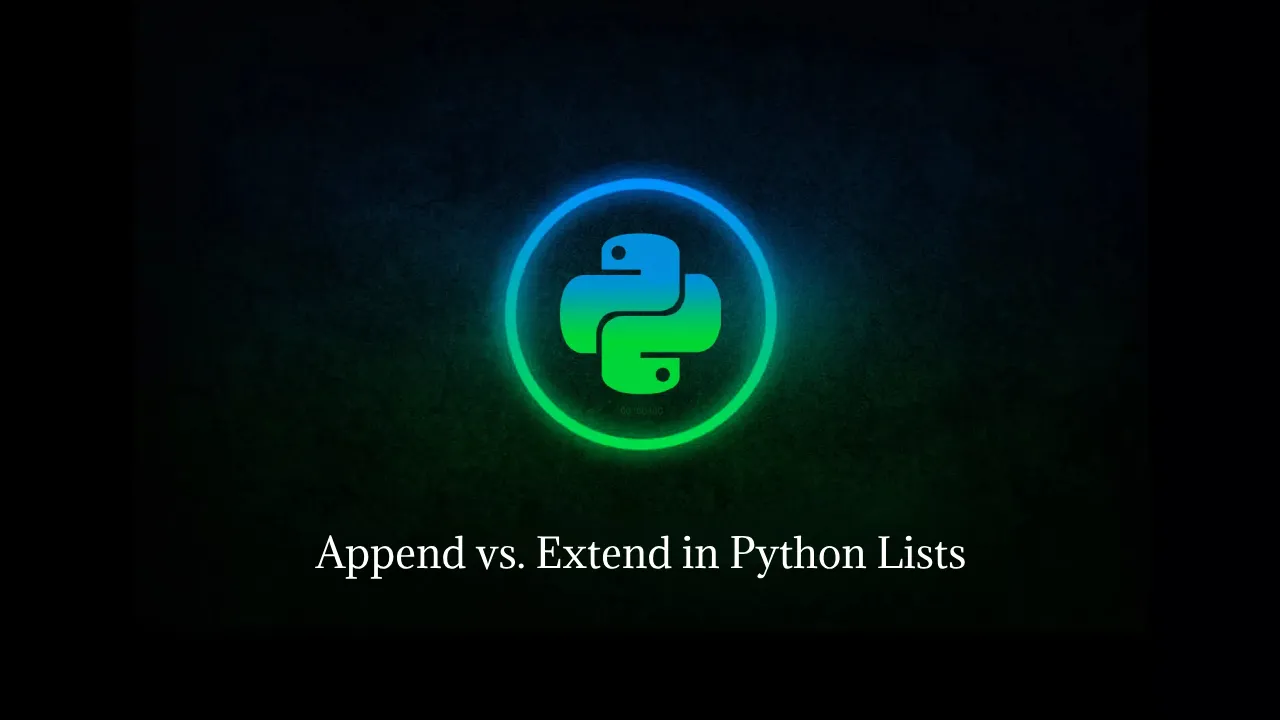Append vs. Extend in Python Lists: A Comprehensive Guide
Python lists are versatile data structures, and understanding their methods is crucial for effective programming. Two commonly used list methods, append() and extend(), may seem similar at first glance, but they serve distinct purposes. In this comprehensive guide, we'll unravel the differences between append() and extend(), exploring their functionalities, use cases, and impact on lists.
append() Method in Python
Definition:
The append() method is used to add a single element at the end of a list. It takes an argument, and that argument is appended as a single element to the existing list.
Syntax:
list_name.append(element)
Example:
numbers = [1, 2, 3]
numbers.append(4)
print(numbers) # Output: [1, 2, 3, 4]
In this example, the append() method adds the element 4 to the end of the numbers list.
extend() Method in Python
Definition:
The extend() method is used to append the elements of an iterable (e.g., another list) to the end of the calling list. It allows for the concatenation of two lists.
Syntax:
list_name.extend(iterable)
Example:
fruits = ['apple', 'banana']
additional_fruits = ['orange', 'grape']
fruits.extend(additional_fruits)
print(fruits) # Output: ['apple', 'banana', 'orange', 'grape']
In this example, the extend() method appends the elements of additional_fruits to the end of the fruits list.
Key Differences Between append() and extend()
1. Input Type:
- append(): Takes a single argument (element) and appends it to the end of the list.
- extend(): Takes an iterable (e.g., list, tuple, string) as an argument and appends its elements to the end of the list.
2. Result:
- append(): Adds a single element to the end of the list.
- extend(): Adds multiple elements (elements of the iterable) to the end of the list.
3. Impact on Original List:
- append(): Modifies the original list by adding a single element.
- extend(): Modifies the original list by adding elements from the iterable.
4. Use Cases:
- append(): Useful when you want to add a single element to the end of a list.
- extend(): Useful when you want to concatenate two lists or add elements from any iterable to the end of a list.
Best Practices and Considerations
1. Single vs. Multiple Elements:
- Use append() when adding a single element.
- Use extend() when adding multiple elements from an iterable.
2. Maintainability:
- Consider the context and readability of your code. Choose the method that makes your code more understandable.
3. In-Place Modification:
- Both methods modify the original list in-place. Be cautious if you want to preserve the original list.
Conclusion
Understanding the nuances between append() and extend() is essential for manipulating lists effectively in Python. Whether you're dealing with a single element or concatenating multiple elements from another iterable, choosing the right method ensures your code behaves as intended. Armed with this knowledge, you can navigate Python lists with confidence, optimizing your code for readability and efficiency. Happy coding!
